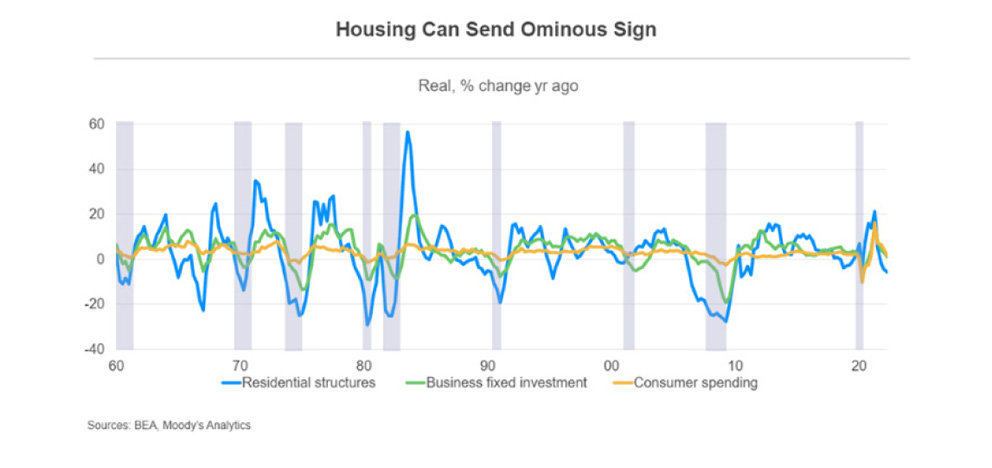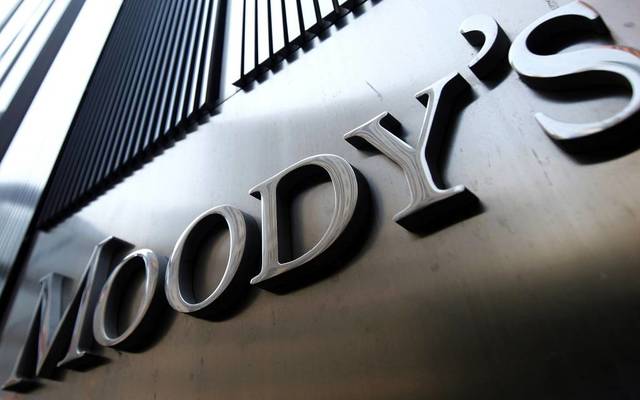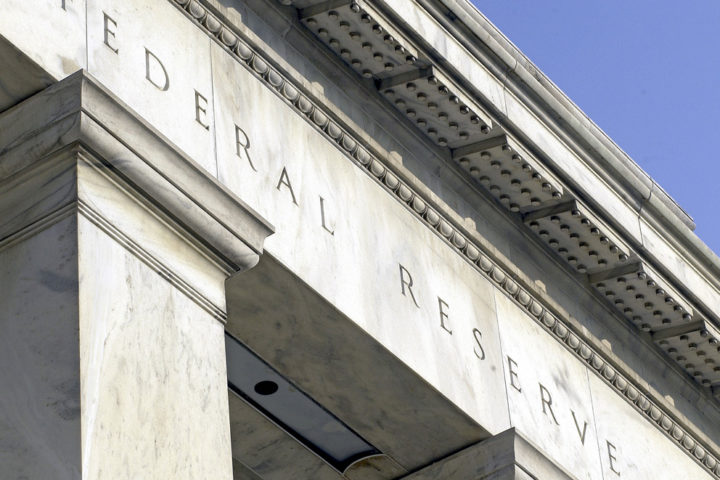By Moody’s Analytics
If there was any doubt that the Federal Reserve was serious about taming inflation, it should be gone after the September meeting of the Federal Open Market Committee as it hiked the target range for the fed funds rate by 75 basis points and signalled a noticeably higher terminal rate than previously thought. We likely need to make a noticeable change to our forecast for the fed funds rate when we update the October baseline. If the Fed follows through with its plan, it will raise the odds of a recession.
The FOMC unanimously raised the target range for the fed funds rate to 3% to 3.25%. This was in line with our and consensus expectations.
The Fed held on to its forward guidance that further rate hikes will be appropriate and mentioned that spending and production have softened while job gains have been robust. Overall, the changes to the post-meeting statement were fairly minor. Of note, there hasn’t been a dissent since June when Kansas City Fed President Esther George wanted a smaller rate hike.
The same can’t be said for the so-called dot plot. There were major shifts, as the dot plot now has the median projection for the fed funds rate at 4.4% at the end of this year with only two meetings remaining, implying a 75-basis point hike in November and a 50-basis point increase in December. The current baseline included a 50- and 25-basis point increase in November and December, respectively. 
The Fed has rates peaking next year at 4.6%. The most hawkish dots, now six, were willing to raise rates to a target range of 4.75% to 5% in 2023. These dots are higher than the range implied by fed funds futures. The Fed expects to cut rates in 2024, ending the year at 3.9% and 2.9% in 2025. There were no changes to the central bank’s estimate of the neutral fed funds rate, which remained at 2.5%. Therefore, monetary policy will be restrictive through the end of 2025.
There were some sizable downward revisions to its forecasts for GDP.
It anticipates real GDP will have risen 0.2% year over year in the fourth quarter of this year followed by 1.2% and 1.7% in 2023 and 2024, respectively. Growth over the next couple of years will be below its estimate of the economy’s potential of 1.8%, which is necessary to reduce inflation.
The Fed revised its forecast higher for inflation through 2024. Inflation returns to the Fed’s target in 2025. The Fed revised its forecast higher for the unemployment rate next year and anticipates it will rise by 0.6 percentage point. Historically, an increase in the unemployment rate of this magnitude over a year has been followed by a recession.
The Fed nudged its core inflation higher this year and next. Part of this likely reflects the incoming data. It is also possible the Fed believes it will take longer for past rate hikes to reduce inflation or it anticipates that some of the stickier components of inflation, including rents, will linger.
What if?
It’s fairly clear that the Fed is going to front-load rate hikes more than in our September baseline and the terminal rate, or the peak for the fed funds rate this cycle, will be higher. The upcoming baseline forecast will include additional rate hikes and a higher terminal rate.
We haven’t finalized our new policy assumptions, but we ran a scenario through the macro model that takes the Fed at its word. Financial markets believe the Fed, as the market-implied path has the terminal rate at 4.61%. Therefore, we shocked the model to incorporate the projected path of the fed funds rate included in the new Summary of Economic projections.
The new path for the fed funds rate reduces GDP growth next year by 0.6 percentage point and 0.3 percentage point in 2024. Per Okun’s law, this will reduce job growth and raise the unemployment rate. The unemployment rate peaks in the first quarter of 2024, averaging 4.5%, compared with the September baseline of 4.1%.
The unemployment rate declines as the Fed starts cutting interest rates. Treasury yields across the yield curve would be higher than in the baseline, with the 10-year Treasury yield hitting 4% by the end of 2023, roughly 50 basis points higher than in the baseline.
When U.S. economy is vulnerable, watch the small things
Though the U.S. economic data have been decent, the economy is still at risk. It is vulnerable to anything going wrong, including further tightening in financial market conditions or an unexpected spike in energy prices. Also, the Federal Reserve could overtighten.
Fed Chair Jerome Powell has pledged to keep raising interest rates until the job is done taming inflation. Our probability of recession model puts the odds of a downturn in the next 12 months at 59.5%, which is uncomfortably high.
Now that the economy is at risk, it is important to assess what drives changes in the business cycle or contributes to the swings in GDP growth. We find that even small components of GDP contribute an outsize share to volatility in GDP growth.
We looked at the five-year rolling correlation between the contribution of each component to GDP and total GDP growth. This is then multiplied by the five-year rolling standard deviation of the components’ contribution to GDP divided by the rolling standard deviation in GDP growth.
The key takeaway is that although consumer spending makes up the bulk of GDP, the contribution to volatility from some of the smaller components in GDP increases as the economy enters recession. These components include inventories and residential investment.
Contrary to popular belief, consumers are not the first to run to the bunker, pushing the economy into recession. Rather, the first to turn is housing, then business investment, followed by consumer spending.
Housing is extremely interest-rate sensitive, and rates are normally rising when the economy is in either a late-stage expansion or potentially at risk of falling into a recession. A fairly reliable recession warning is year-over-year growth in new-home sales. The rule of thumb is that when the six-month centered moving average of new-home sales is down 20% to 30%, a recession normally follows with varying lags. There was only one false negative and that was during the pandemic, but it should be discounted as more noise than signal.
Currently, the centered average of new-home sales is down 19.6% on a year-ago basis and odds favor further weakening as mortgage rates will likely continue to increase. This cycle is unlike any other because of what sparked the recession and subsequent recovery, so it is important not to rely on a single warning of a recession. But declines in housing activity may be an ominous sign.










